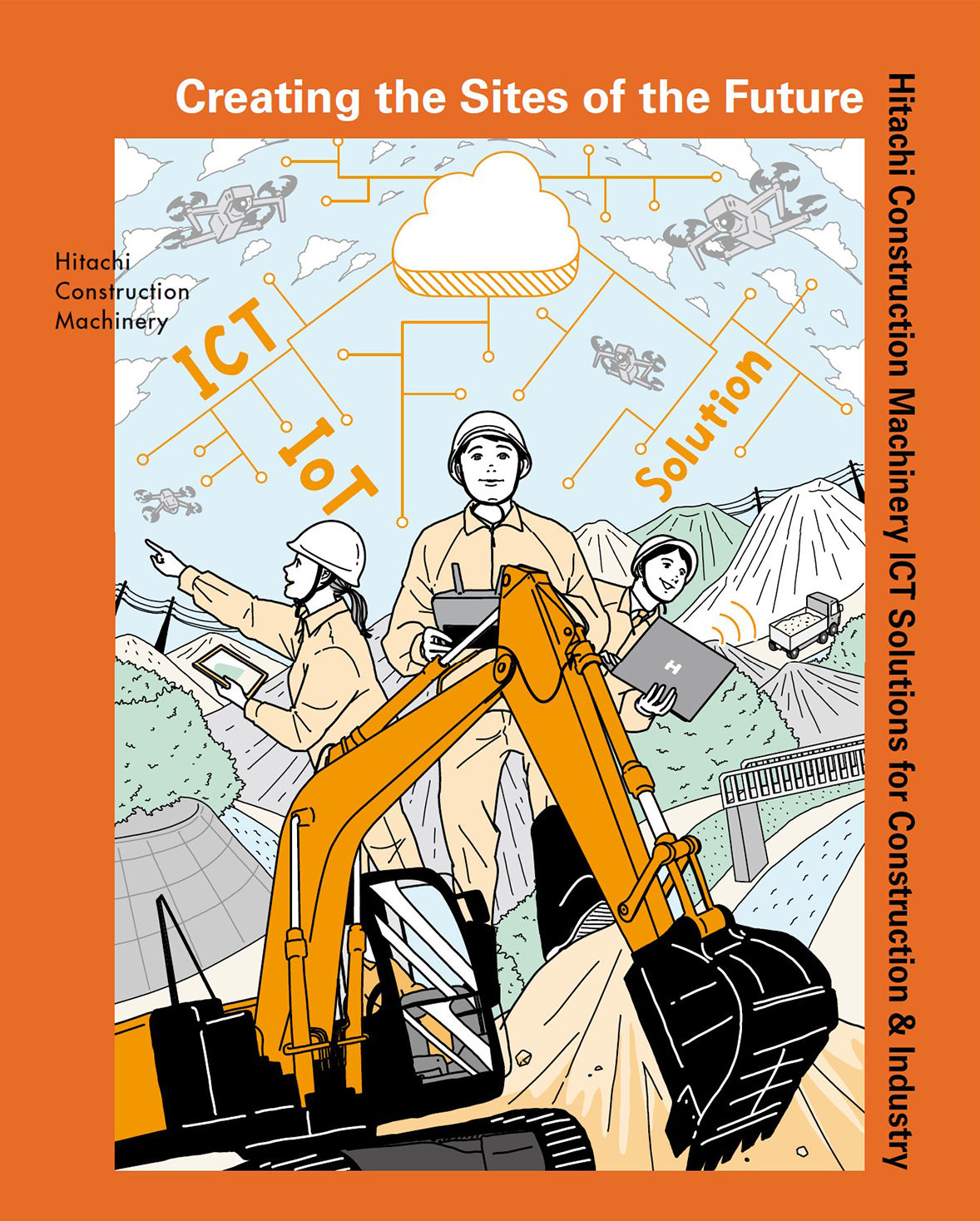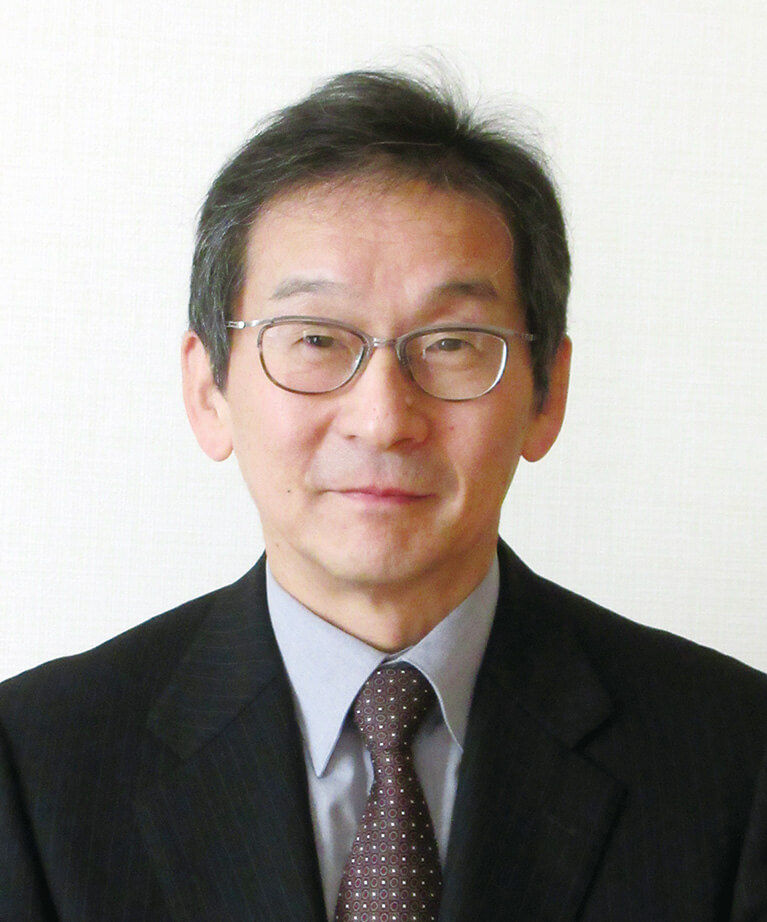Take the first step in ICT application from the small kaizen that’s right in front of you

Digital transformation is now accelerating in all industries around the world.
In the construction industry, the use of digital technology is getting attention as a solution to the shortage of workers, but in practice, it is not permeating much.
We want to take the lead in applying ICT, to solve the construction industry’s productivity and safety challenges, and to adapt to an ever-changing market environment.
We present content such as hints for readily deployable ICT applications in construction and an introduction to trends in ICT construction in the world.
Text: Toshiyuki Ota
Illustrations: Chiharu Nikaido
Photography: Norio Sekine


The use of i-Construction is making steady progress and yielding results.
That trend will spread to small-scale and private-sector construction in future.
The wave of transformation is coming fast, backed by the rapid advance of technological evolution.
For this special issue, we talked to professor Kazuyoshi Tateyama of Ritsumeikan University College of Science and Engineering about readiness for that change.

Ritsumeikan University College of Science and Engineering Professor, Department of Civil and Environmental Engineering Ministry of Land, Infrastructure, Transport and Tourism i-Construction Committee member
Kazuyoshi Tateyama
Graduated from the Faculty of Engineering, Kyoto University, in 1980. Worked as an assistant professor at the same before becoming a professor at Ritsumeikan University in 2004. Standing director of Ritsumeikan University from 2013. His specialist fields are construction science, computer-aided construction, the development of new construction technologies, and geotechnology. He has been working to streamline construction through the application of ICT, with appointments including Chair of the Ministry of Land, Infrastructure, Transport and Tourism Computer-Aided Construction Promotion Council, and member and chair of the Japan Society of Civil Engineers Construction Robots Committee.
― i-Construction began five years ago. What results and achievements has it yielded so far?
Tateyama
i-Construction started in 2016 with the aim of sweeping away the conventional image of work in the construction industry as difficult, dirty, and dangerous, and making it an attractive industry. One of the aims of i-Construction is to apply 3D design data throughout all stages, from surveying through construction to operation and management, in order to raise construction site productivity. The development of remote inspection, remote control, robots, and other technologies usable on construction sites has been moving forward, with backing from the Cabinet Office’s Public/Private R&D Investment Strategic Expansion PrograM (PRISM).
― Efforts to use ICT to improve safety have also been increasing.
Tateyama
Health and safety education, using VR (virtual reality) and AR (augmented reality), has also been expanding and improving. The Japan Construction Occupational Safety and Health Association (JCOSHA) has been databasing real near-miss cases in an effort to identify and share the factors behind occupational accidents, including workload, physical and psychological conditions, and the like. It is about to start developing preventive maintenance systems that use AI to analyze these factors and issue warnings when risk factors are suspected. Venture companies are also moving into this field, and there is a real sense that new digital technologies are spreading through construction sites. That was not envisaged when i-Construction first started.
― ICT construction is applied to around 80% of the civil engineering works under the direct management of the Ministry of Land, Infrastructure, Transport and Tourism. On the other hand, the implementation rate is stagnating in small-scale construction works.
Tateyama
One factor is that, considering the investment costs, it is difficult to take the first step into ICT. But rather than applying ICT comprehensively to a series of processes, I think it’s important to start by trying out ICT by applying it partially, to just surveying, or just construction. A lot of accessible and convenient ICT Solutions for Construction & Industry are coming out now, such as generating 3D data from data surveyed with a smartphone, or retrofitting machine guidance functions to existing construction machinery. Start from whatever you can, then accumulate your own expertise, and share learned information about good tools and how to use them. It’s good enough to start small and gradually spread out.
Bigger Jobs With Fewer People
― Mindset change is the necessary first step to changing how people work on site.
Tateyama
That’s right. The change of thinking, from a conventional labor-intensive approach to “safe and easy ways to profit”, will propel the spread of ICT transformation.
― So how will the application of ICT change how people work?
Tateyama
Let’s take a look at the example of using ICT for snow clearing. It’s now getting difficult to find people to work as snow clearing operators. One example, which is still at the development stage, is the addition of machine guidance functions etc. to snow ploughs, allowing the use of 3D map data, so that snow clearance work which previously required a two-person team can be done by a single operator. If the application of this technology makes good progress, the benefits of reducing workforce and raising efficiency could be returned to wages. In this way, we should be thinking, more than ever, of “easily doing double the work with one person”.
― So it’s important to think about how to use ICT to solve problems on site.
Tateyama
Yes. For example, discussing what kind of technology to use to reduce workforce and shorten construction times is an important process. Changing to ICT must not be made into the objective. The objective is to identify problems on site and advance discussion of kaizen to solve them. It’s important to have the approach of using ICT as a means to that end.
― How should we build that kaizen perspective?
Tateyama
I think the “lean manufacturing” that Toyota Motor Corporation systematized to cut away waste between processes is an instructive example. In lean manufacturing, work is classified into the three classifications of ① value-adding work, ② ancillary work, and ③ waste, and the method cuts the total cost and construction period for the entire process. If we apply that approach to road earthworks, the ① value-adding work is work that is intrinsic to the construction, which means using construction machinery for excavation, carrying, leveling, and compaction. If we try to streamline that, it is necessary to replace the machines themselves with construction robots etc., and major kaizen is needed. ② Ancillary work is necessary to achieve the value-adding work. Here it means surveying, document preparation, and measurement of the finished form. For example, abandoning the hand-written construction blackboard that shows the progress of construction works, and saving onsite work by using a digital version, automatically generating reports from soil loading data, and digitalizing ancillary work, can free workers to focus on their real jobs and reduce overall work quantities. ③ Waste is work that is not genuinely necessary, such as waiting time associated with inspections between processes. Remote environments have spread amid the pandemic, and there is growing interest in “remote presence”, by which video is used on construction sites to check things on site. Time for traveling to inspection meetings is eliminated, so this is a good example of reducing waste. Finding inconvenient and tiresome things and applying kaizen connects to the idea I mentioned earlier of “safe and easy ways to profit”.
― What are your expectations for the application of ICT to the construction industry in future?
Tateyama
In manufacturing, factory automation was advancing in the 1990s, but automation in the construction industry has been left behind. Of course, in contrast to manufacturing, which carries on stable production of fixed products, construction has many uncertain elements, such as dealing with the natural environment and not knowing the detailed ground composition without digging below the surface to see, and that has been an impediment. But with the use of AI in future, work will be supported by functions able to make autonomous judgments according to site conditions. Furthermore, I expect to see progress in the AI-based autonomy of construction machinery and in labor saving.
― As the application of ICT and AI move forward, construction will become an industry which even young people find very attractive.
Tateyama
As industry-academia partnerships and open innovation get stronger, students in the fields of data processing and electronics, as well as civil engineering and construction, will increasingly see this as an industry to aspire to. In small and medium enterprises, hiring foreign exchange students with strong digital skills might become an option. At this time, as we face a time of major transformation in how we deal with changing to ICT, there should be steady progress in interaction in knowledge and technology. I expect diversity and inclusion to spread and stimulate the construction industry, leading to new innovation.


